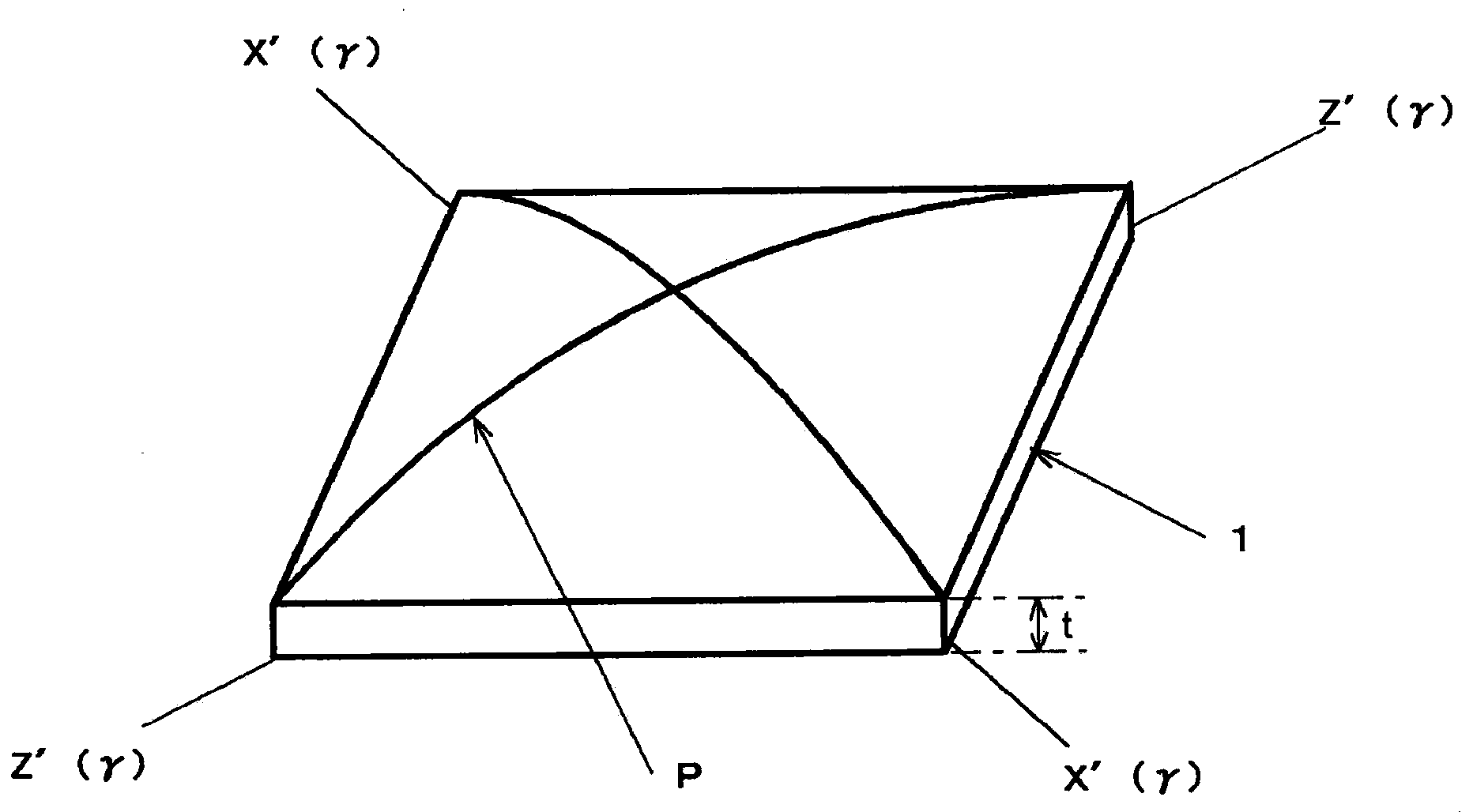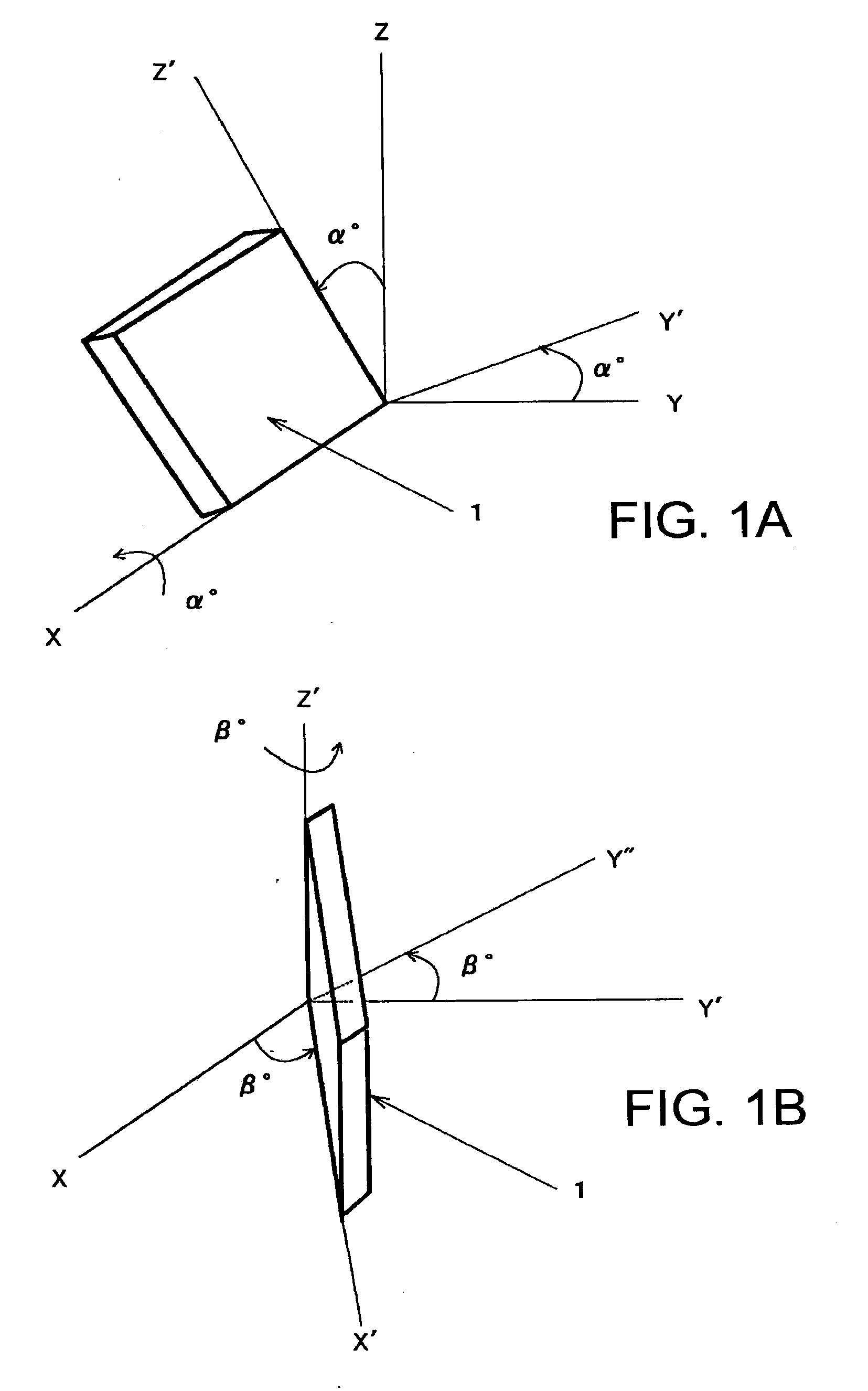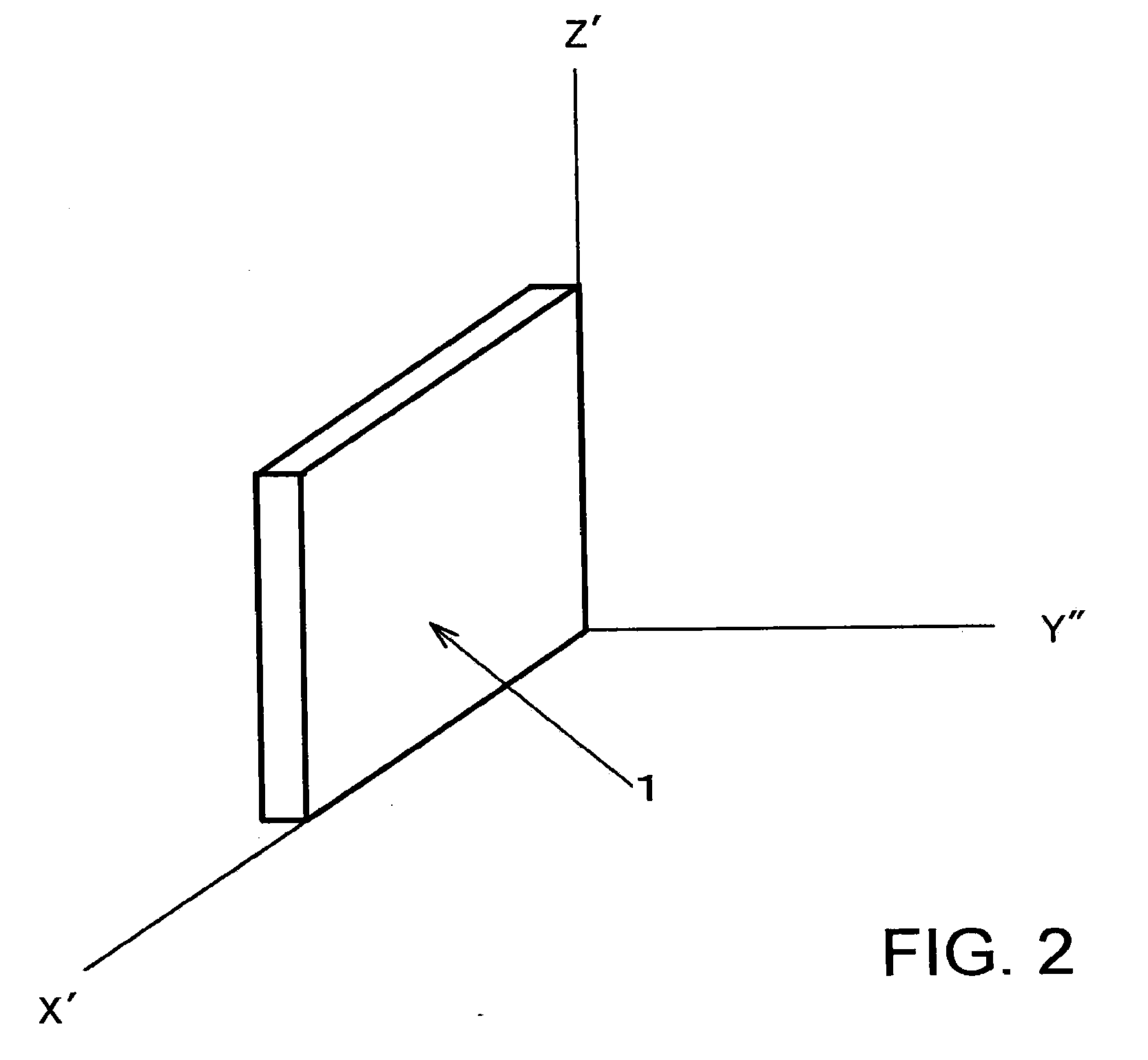Quartz crystal element made of double-rotation y-cut quartz crystal plate
- Summary
- Abstract
- Description
- Claims
- Application Information
AI Technical Summary
Benefits of technology
Problems solved by technology
Method used
Image
Examples
first embodiment
[0040]FIG. 7 shows a quartz crystal element made of a double-rotation Y-cut plate according to the present invention. Particularly, FIG. 7 illustrates a quartz crystal blank constituting the crystal element. Here, description will be made on the case in which the double-rotation Y-cut plate is an SC-cut quartz plate.
[0041]The SC-cut crystal element uses crystal blank 1 which has a principal plane orthogonal to a Y″-axis, where the Y-axis is rotated twice with rotation angles (reference angles) α and β from the crystallographic X-axis and Z-axis of quartz being 22 degrees and 33 degrees, respectively, and resulting three axes are designated as an X′-axis, a Y″-axis, and a Z′-axis (see FIG. 2). Crystal blank 1 here is configured to have a square planar shape as well, so that diagonal lines which are inclined by an angle of γ from the Z′-axis and the X′-axis, respectively, are null stress-sensitivity axes Z′(γ) and X′(γ). Where γ is 8 degrees.
[0042]In this embodiment, one principal pla...
second embodiment
[0051]Further, by processing one principal plane of crystal blank 1 into a quadrangular pyramid like shape with the thickness of crystal blank 1 being slightly larger than the thickness corresponding to a standard value for target frequency, and thereafter processing vertex portion 5 of the quadrangular pyramid to be a flat surface shape thereby decreasing the thickness of crystal blank 1, it is possible to adjust the vibration frequency of crystal blank 1 in a range of the standard value of the target frequency. Such adjustment of vibration frequency may be performed in a similar fashion in a second embodiment described later.
[0052]FIG. 12A shows a crystal element made of a double-rotation Y-cut plate according to a second embodiment of the present invention. Here, description will be made on the case in which the double-rotation Y-cut plate is an SC-cut plate. FIG. 12A shows a crystal blank in such SC-cut crystal element. In the figure, like components as in the above described ea...
PUM
 Login to View More
Login to View More Abstract
Description
Claims
Application Information
 Login to View More
Login to View More - R&D
- Intellectual Property
- Life Sciences
- Materials
- Tech Scout
- Unparalleled Data Quality
- Higher Quality Content
- 60% Fewer Hallucinations
Browse by: Latest US Patents, China's latest patents, Technical Efficacy Thesaurus, Application Domain, Technology Topic, Popular Technical Reports.
© 2025 PatSnap. All rights reserved.Legal|Privacy policy|Modern Slavery Act Transparency Statement|Sitemap|About US| Contact US: help@patsnap.com



